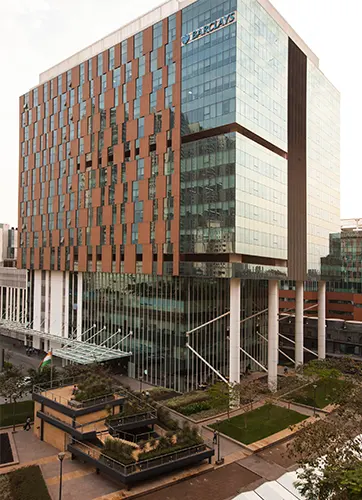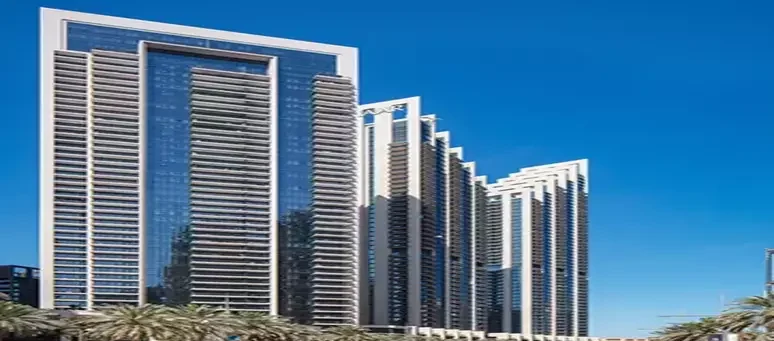What are the common causes of building fires?
The common causes of building fires are:
- Electrical – Improper or faulty wiring, equipment overload, faulty lighting, etc.
- Cooking equipment – LPG leak, equipment overheating, etc.
- Smoking
- Lightning (very rare)
Please throw some light on various façade/fenestration materials’ reactions to fire?
- High resistance to fire/Non combustible – Stone (like granites and marbles), clay/terracotta, interlayered toughened fire glass, etc.
- No resistance to fire / combustible materials – Like untreated wood or wood dust products
- Fire-resistant materials like brick, fire rated Gypsum wallboard, concrete, etc.
- Ignition resistant materials like high pressure laminate (HPL), specially treated wood, PVC core ACP, etc.
It is important to note here that greater danger is not from the fire itself, but also from the smoke and toxic fumes in event of a fire.

What are the parameters which define the performance of a fire retardant façade/fenestrations?
Fire resistance in façades and fenestrations is generally defined by the following parameters:
- The ability to contain the spread of fire
- The ability to emit low smoke and no toxic fumes
- The ability to self-extinguish
- The ability to hold on to fire without spreading/disintegrating, for as much as possible till the occupants evacuate safely
- The ability to insulate without significant transfer of heat
What are the aspects to consider while designing and installing fireproof or fire resistant façades and fenestrations?
Apart from the 4 points mentioned above, we have to seal all the voids/shafts/ducts between floors and in the façade, to prevent the spread of any fire/smoke. If any steel is used in the façade, it should be coated with intumescent paint. Glass is the most common fenestration material and great care is to be taken while selecting glass. Fire-rated glass is very expensive and generally not used in external façades. However, a laminated glass could help better than unlaminated glass, to at least maintain the integrity of fenestration in an event of a fire, due to the presence of PVB interlay. NBC and other fire codes also recommend compartmentalisation which should be adhered to.

Tell us about fire-resistant materials which can be used on facades/fenestrations?
Good fire-resistant façade materials could be fire-rated glass (if budget permits), terracotta panels, stone cladding, solid aluminium panels, fire-rated ACP (conforming to relevant codes), brick, etc.
How can glass be a fire-resistant material? How does an interlayered toughened fire glass work?
Glass can be made fire-resistant by making the panel in multiple layers separated by an intumescent layer. In event of a fire, the intumescent layer spreads on the surface of the glass and expands multiple times and protects the glass surface. This happens by the virtue of the intumescent layer burning off first before the heat can get to the glass. However, this property of the interlayered toughened glass, based on its rating, only gives enough time for the occupants to evacuate a building in event of fire.
Explain active and passive systems for fireproof facades/fenestrations? How can we prevent fire spreads?

Active systems for fire spread are those systems which get activated and try to extinguish in event of fire. However, at present, their use is very few or maybe none exists in our country barring smoke exhaust venting and fire drenchers.
Passive systems are those which contain the growth and spread of fire from one compartment to other. The aim is to reduce the amount of damage to the building inflicted by the fire, delaying the collapse of the building structure and reducing the possible life and health risks of the building occupants and the firefighters Therefore it provides the building with the strength to withstand fire for a certain period of time, ensuring the safe evacuation of its occupants and the safety of the building surrounding it. Passive sealing of all the voids/shafts/ ducts between floors and in the façade will contain any spread of fire/smoke. If any steel is used in the façade, it should be coated with intumescent paint.
What are fire barriers and fire-stopping systems?
Fire stops are the physical installation of barriers in form of plates, sealants, membranes, etc. which prevent the spread of fire, smoke and toxic fumes to various parts of the buildings/ other floors through gaps in façades and external walls, and between floors.
What is the need for fire-rating requirements on the façade/doors/windows and the exterior wall systems?
Architects and designers are constantly pushing the envelope for taller buildings and sustainable buildings all over the world. Presently, there are no codes for mandatory fire rating for façade elements (Apart from a mention in NBC 2016 about Perimeter Firestopping). However, in the recent events of the multiple incidents of fires and also in the absence of any active façade fire protection systems, it is imperative to look at stringent codes to make our buildings safer and sustainable for all of us.
What are the standards used for grading fire-resistant materials including glass, ACP, uPVC etc.?
A1 Fire Rating Cladding Classification The cladding materials that fall under the A1 fire classification, they are the ones with the highest performance. These materials are non-combustible in nature and have no contribution to fire at all. A2 Fire Rating Cladding Classification The construction cladding materials of A2 cladding have limited combustibility properties. They have very limited contribution towards the fire.
B Fire Rating Cladding Classification These are the no flashover materials. They are the combustible materials that can have some contribution to the fire in your building.
Apart from above, ASTM E84 talks about Surface burning characteristics of building materials.














